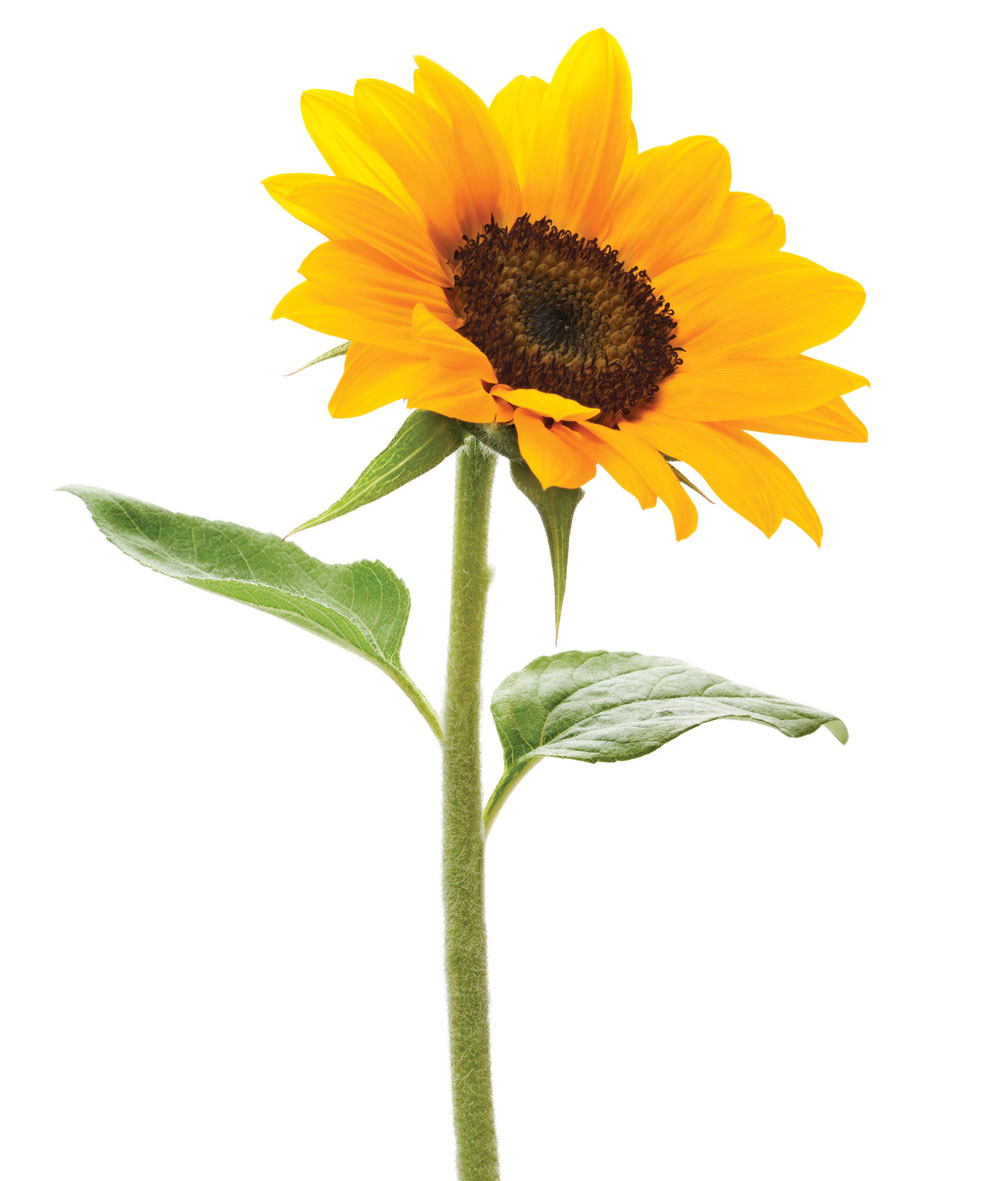Sunflower – As Delicious And Nutritious As They Are Widespread
Name: Sunflower
(Helianthus annus)
Worldwide, the sunflower family has about 1,500 genera and about 23,000 species! Botanist Willis Linn Jepson divides this very large family into 14 groups.
Genus Helianthus is just one of 142 genera in this enormous family and is perhaps one of the most commonly known. There are 67 known species of Helianthus, and the commonly cultivated sunflower is just one of these. Many of the wild species of Helianthus closely resemble the cultivated sunflower but don’t always produce the same volume of seeds.
Description
You’ve no doubt seen flowers in fields many times and thought, “Hey, those are sunflowers.” Maybe they were, maybe they weren’t. After all, the sunflower family is one of the largest botanical families. If what you saw was tall and looked very much like the sunflower plants that we grow in our gardens—but perhaps just a bit smaller—you’ve likely encountered an actual wild sunflower plant.
The sunflower plant can grow up to 8 feet tall. Its erect stem is usually unbranched (but it can sometimes be branched). It’s covered in stiff hairs. The leaves are alternately arranged and are generally triangular in shape (they’re more or less heart-shaped and narrow to a tip). The leaves are also covered in stiff hairs.

It’s the flower that’s universally recognized. The flower heads are around 6 inches across, with yellow ray flowers “petals”. The flowers of the central disk have no showy petals and are brown. The fruits are single-seeded, dry and flat.
Where Found
Sunflowers are common in disturbed soils, roadsides, plains, prairies and fields.
Uses
The seeds are the primary food source, although sometimes, wild sunflowers don’t produce the abundant volumes of seeds to make gathering worthwhile. Alternatively, the seeds can be very small and dry. If there’s a sufficient volume for collecting, they’re collected when they’re ripe and are then shelled.
The seeds are used in bread products, pastries, desserts, drinks and as snacks. The shelled seeds can be used raw or roasted in any recipes calling for nuts, including breads and cakes. Finely ground sunflower seeds—shell and all when they’re tiny—can be used as a partial substitute for flour in some recipes.

Native people roasted and ground the entire seed into a fine flour. The flour was then mixed with water and made into a drink or a dough, along with other ingredients. On the other hand, the wild sunflower seed doesn’t make as good a nut butter as other seeds or nuts.
Linda Sheer, from rural Kentucky, was my friend and mentor. She told me that when her people didn’t have enough “regular” food, the young, immature flower heads of the sunflower would be collected, boiled until tender and eaten. She prepared and served these to us at one of our cooking classes.
Although a bit chewy and mildly bitter, even after being boiled, they were certainly edible and palatable, and her unique seasonings made them tasty.
Note
There’s a sunflower native to the eastern United States that reproduces by its tubers, not its seeds. This sunflower is commonly known as a “Jerusalem artichoke” (Helianthus tuberosus), or sunchoke. The tubers can be eaten raw or cooked and are similar to eating carrots.
Processing
Botanist William Schlegel told me about the classic book, Buffalo Bird Woman’s Garden, in which the author discussed how hard it is to grind sunflower seeds, so he ground them, shell and all. Schlegel pointed out that sunflower seeds can be hard to shell, even with modern equipment “imagine the fiber!” he exclaimed.

One method of separating the shell from seed is to coarsely break the seeds and pour them all into water. The seeds will sink, and the shells will float and can be removed.
When to Harvest/Availability
Harvest sunflowers in late spring to summer, when the seed heads mature.
Medicine/Nutrition
Are sunflower seeds good for you? According to the USDA, 100 grams of dry sunflower seeds contains 120 mg of calcium, 837 mg of phosphorus, 7 mg of iron, 920 mg of potassium, 50 IU of vitamin A, 5.4 mg of niacin, 560 calories and trace amounts of other minerals. Sounds pretty good to me!
However, keep in mind that seeds from the various wild sunflower plants might contain more or less of these nutrients.

Other Uses
The shells have sometimes been dried, roasted and then used to make a coffee substitute, often mixed with other ingredients.
Advice for Growing
Sunflowers are very easy to grow. Plant them in good garden soil and where there’s mostly full sun. Water as needed.
Cautions
None
Recipe
Sunflower Seed Halvah
Try making your own halvah with sunflower seeds.
Blend equal parts of finely ground sesame seeds and finely ground sunflower seeds. Add honey. Continue to blend until you have a homogeneous mass. It should hold together but not be too runny. Pack the halvah into a plastic tub and put it into your refrigerator. Once it firms up, it’ll be ready to eat.

About ASG’s Plant Advisor
Christopher Nyerges has been teaching ethnobotany since 1974. He’s the author of Guide to Wild Foods and Useful Plants, Foraging Wild Edible Plants of North America, and other books on the uses of wild plants. He can be reached at SchoolofSelf-Reliance.com.
Editor’s note: A version of this article first appeared in the October, 2020 print issue of American Survival Guide.


